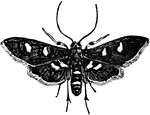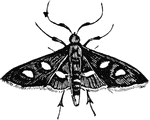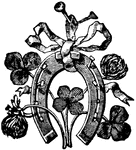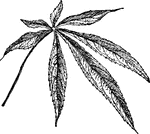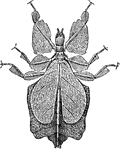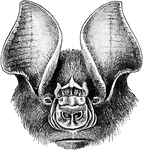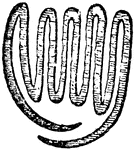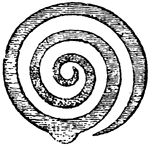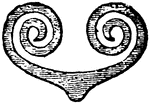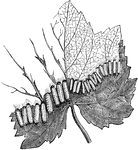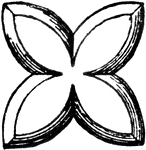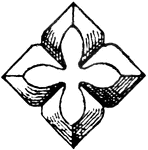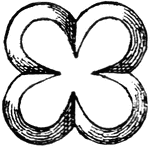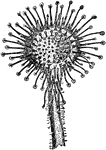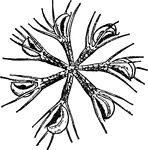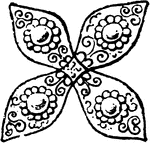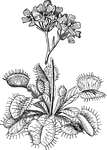
Venus Fly Trap
A plant with a rosette of root leaves, from which rises a naked scape bearing a corymb of rather large…

Pinnatifid Leaf
A leaf cut or cleft in a pinnate manner, with the divisions half way down or more, and the sinuses or…

Shamrock
"The national emblem of Ireland, is a plant with a leaf formed from three leaflets. It is thought to…
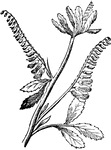
Melilot
"A genus of clover-like plants of the natural order Leguminosae, with ternate leaves, differing from…

Pondweed Leaf
"Vertical section of the leaf of Potamogeton or Pondweed, showing air cavities or lecunae l, and parenehymatous…
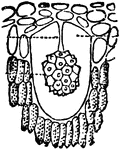
Urostigma Elasticum
"Cellular tissue from leaf of Urostigma elasticum. c, a large cell; r, cystolith, an agglomeration of…

Epidermis
"Vertical section of epidermis, from the lower surface of the leaf of Madder, showing the intimate union…
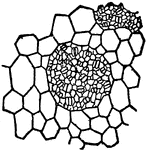
Saxifraga Sarmentosa
"Epidermis of leaf of Saxifraga Sarmentosa, showing clusters of stomata s, surrounded by large epidermal…
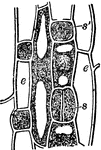
Hyacinth
"Formation of stomata from leaf of Hyacinth, seen from the surface. e, epidermis cells; s', mother-cell…
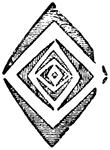
Bud
"Transverse section of a bud, in which the leaves are arranged in an accumbent manner." — Encyclopedia…

Bud
"Transverse section of a bud, in which the leaves are arranged in an equitant manner." — Encyclopedia…

Bud
"Transverse section of a bud, showing two leaves folded in an obvolute manner. Each is conduplicate,…
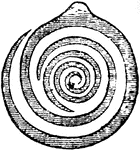
Bud
"Transverse section of a bud, showing two leaves arranged in a supervolute manner." — Encyclopedia…
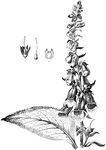
Purple Foxglove
A biennial herb native to Europe. Its leaves and flowers are poisonous to humans and some animals.

Tortricina
"The Tortricina include a great number of small moths exceedingly injurious to orchard and other trees.…
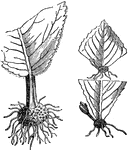
Leaf Cuttings
"Many plans may be propagated by planting their leaves or portions of their leaves as cuttings, as,…
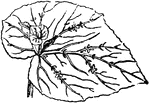
Leaf Cuttings
"Many plans may be propagated by planting their leaves or portions of their leaves as cuttings, as,…

Single Eye
"This mode of propagation is performed by cutting the branches into short lengths, each containing one…
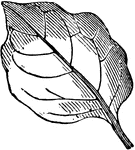
Repand Leaf
Wavy; tending to be sinuate, but less even; undulate; said chiefly of leaves and leaf margins.

Arrow-root
"Arrow-root (M. arundinacea). a, tubers; b, leaf and flowers; c, stamen and style." — Chambers'…

Convolvulus
"Convolvulus: a, part of stem with leaves and flower; b, a flower-stalk and flower, the corolla and…
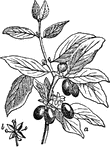
Cornel
"Cornel: a, a branch with leaves and fruit; b, a single flower." — Chambers' Encyclopedia, 1875
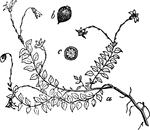
Cranberry
"Cranberry (Vaccinium palustris): a, part of stem and branches, with roots, leaves, and flowers; b,…
Crockets
"In Gothic Architecture, are projecting leaves, flowers, or bunches of foliage, used to decorate the…

Crockets
"In Gothic Architecture, are projecting leaves, flowers, or bunches of foliage, used to decorate the…

Dogbane
"Dogbane. a, end of branch, with leaves and flowers; b, a flower cut open; c, fruit." — Chambers'…

Common Elder
"Flower-stock, Leaves, and cluster of Berries of the Common Elder (Sambucus nigra)." — Chambers'…

Sundew
"Leaf of Sundew, enlarged, with the tentacles on one side infected over a bit of meat placed on the…
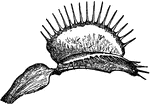
Venus Fly-trap
"Leaf of Venus's Fly-trap (Dionaea muscipula), viewed laterally in its expanded state." — The…

Venus Fly-trap
"Leaf of Venus's Fly-trap (Dionaea muscipula), closed over insect, viewed from the side." — The…
Venus Fly-trap
"Leaf of Venus's Fly-trap (Dionaea muscipula), closed over insect, viewed from above." — The Encyclopedia…
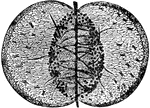
Aldrovanda
"Aldrovanda vesiculosa. Leaf pressed open and enlarged, showing glands, sensitive filaments, and quadrifid…
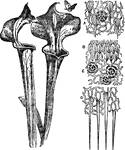
Sarracenta
"Leaves of Sarracenta purpurea. A, attractive surface of lid; B, conducting, C, glandular, and D, detentive…

Cephalotus
"Cephalotus follicularis, showing ordinary leaves and pitchers, the right hand one cut open to show…

Pitchers
"Morphology of Pitchers. A, ordinary leaf of Cephalotus; B, monstrous leaf with spoon-shaped depression;…

Ivory Carving
"Leaf of a diptych, Roman, probably about 4th century, South Kensington Museum collection." —…

Runcinate Leaf
An irregular saw-toothed or pinnately incised with the lobes or teeth hooked backwards.
